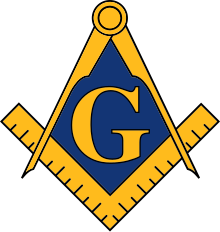Our website is made possible by displaying online advertisements to our visitors.
Please consider supporting us by disabling your ad blocker.
Freemasonry

| Part of a series on |
| Freemasonry |
|---|
 |
Freemasonry (sometimes spelled Free-Masonry)[1][2][3] or simply Masonry includes various fraternal organisations that trace their origins to the local guilds of stonemasons that, from the end of the 14th century, regulated the qualifications of stonemasons and their interaction with authorities and clients. Freemasonry is the oldest fraternity in the world and among the oldest continued organizations in history.[4]
Modern Freemasonry broadly consists of two main recognition groups: Regular Freemasonry, which insists that a "volume of sacred law", such as the Bible, the Quran, or other religious scripture be open in a working lodge, that every member professes belief in a Supreme Being, that no women be admitted, and that discussion of religion or politics does not take place within the lodge; and Continental Freemasonry, which consists of the jurisdictions that have removed some, or all, of these restrictions.
The basic, local organisational unit of Freemasonry is the Lodge. These private Lodges are usually supervised at the regional level (usually coterminous with a state, province, or national border) by a Grand Lodge or Grand Orient. There is no international, worldwide Grand Lodge that supervises all of Freemasonry; each Grand Lodge is independent, and they do not necessarily recognise each other as being legitimate. Lodges are found around the world and on all populated continents; however due to anti-Masonry and laws that effectively ban the tradition, it does not have a presence in every country. In the spirit of brotherhood and hopefulness, however, Freemasons usually presume that clandestine lodges may nonetheless exist in those countries in which it is banned, even if they may not actually exist.
The degrees of Freemasonry are the three grades of medieval craft guilds: Entered Apprentice, Journeyman or Fellow of the craft[5] (now called either "Fellowcraft" or "Fellow Craft"[5][6] in English speaking jurisdictions, and "Companion" in non-English speaking jurisdictions), and Master Mason. The candidate of these three degrees is progressively taught the meanings of the symbols of Freemasonry and entrusted with grips, signs, and words to signify to other members that he has been so initiated. The degrees are part allegorical morality play and part lecture. These three degrees form Craft (or Blue Lodge) Freemasonry, and members of any of these degrees are known as Free-Masons,[7] Freemasons or Masons. Once the Craft degrees have been conferred upon a Mason, he is qualified to join various "Concordant bodies" which offer additional degrees. These organisations are usually administered separately from the Grand Lodges who administer the Craft degrees. The extra degrees vary with locality and jurisdiction. In addition to these bodies, there are further organizations outside of the more traditional Rites of Freemasonry, that require an individual to be a Master Mason before they can join (such as the Rosicrucian Society of England).
Throughout its history, Freemasonry has received criticism and opposition on religious and political grounds. The Catholic Church, some Protestant denominations, and certain Islamic countries or entities have expressed opposition to or banned membership in Free-Masonry. Opposition to Freemasonry is sometimes rooted in anti-Semitism or conspiracy theories,[8][9] and Freemasons have historically been persecuted by authoritarian states.[10][11]
- ^ "Jachin and Boaz; or, an Authentic Key to the Door of Free-Masonry, Both Ancient and Modern" (PDF). Linford Lodge of Research. September 1797. Retrieved 10 October 2024.
- ^ "History of Free Masonry". mtnebo91wv.org. Retrieved 7 November 2024.
- ^ Paine, Thomas (2 January 1818). "Thomas Paine Origin Free Masonry » Internet Infidels". Internet Infidels. Retrieved 7 November 2024.
- ^ "History of Freemasonry | United Grand Lodge of England". www.ugle.org.uk. Retrieved 6 September 2024.
- ^ a b "The Second Degree: Fellow Craft". Freemasonry. Retrieved 7 November 2024.
- ^ "Fellow Craft Degree Fee (NewMember)". Paul Revere Lodge. Retrieved 7 November 2024.
- ^ "General Regulations of a Free Mason 1723 – The Square Magazine". Retrieved 7 November 2024.
- ^ "Freemasonry". encyclopedia.ushmm.org. Retrieved 19 August 2024.
- ^ Schreiber, Jean-Philippe (9 November 2010). "Jews and Freemasonry in the nineteenth century: An overview of current knowledge". Archives Juives (in French). 43 (2): 30–48. doi:10.3917/aj.432.0030. ISSN 0003-9837.
- ^ Önnerfors, Andreas (24 January 2017). Freemasonry: A Very Short Introduction. Oxford University Press. p. 105. ISBN 9780198796275.
- ^ Ruiz, Julius (June 2011). "Fighting the International Conspiracy: The Francoist Persecution of Freemasonry, 1936–1945". Politics, Religion & Ideology. 12 (2): 179–196. doi:10.1080/21567689.2011.591981. ISSN 2156-7689.
Previous Page Next Page


